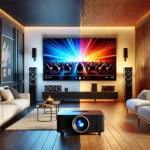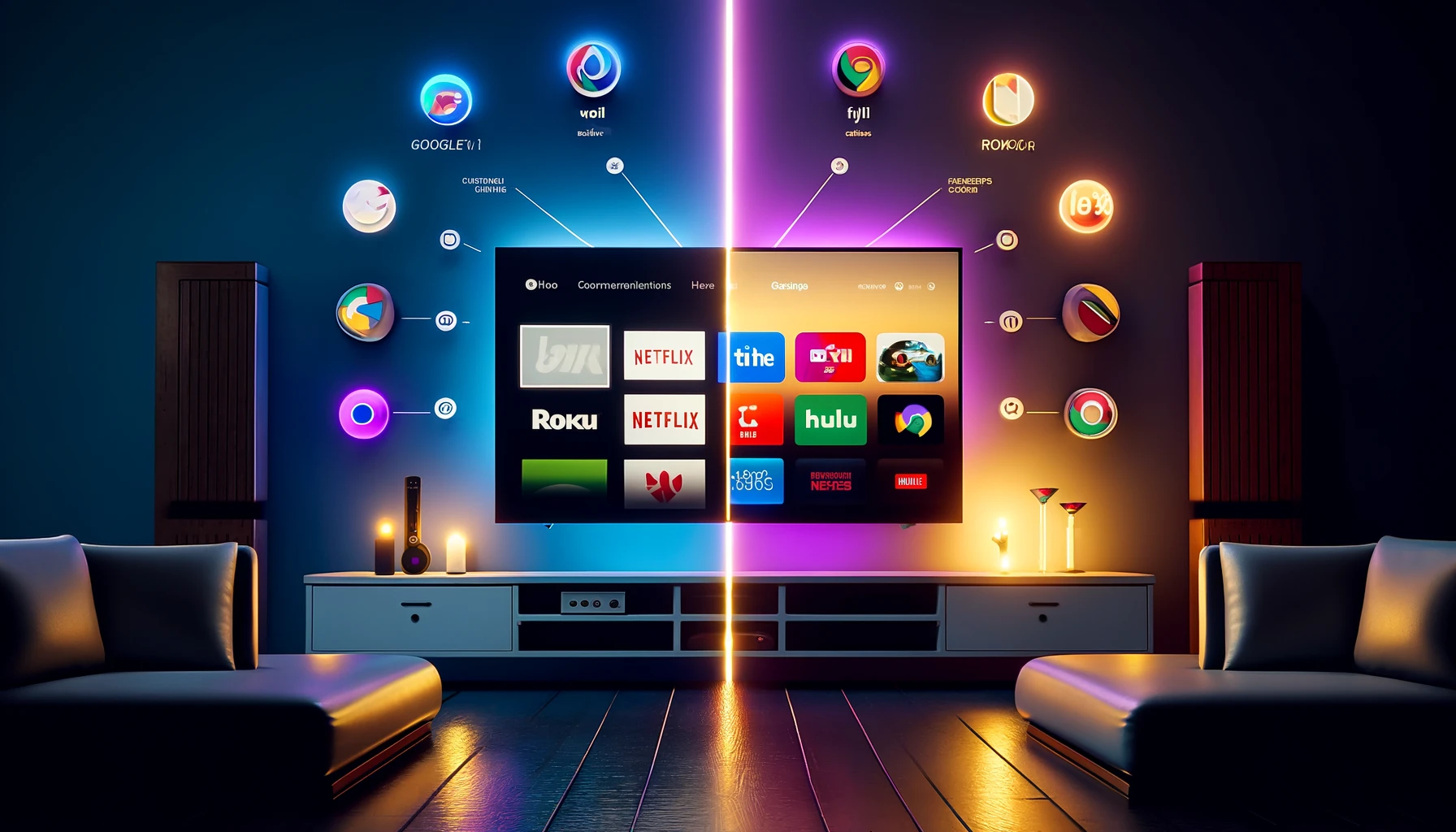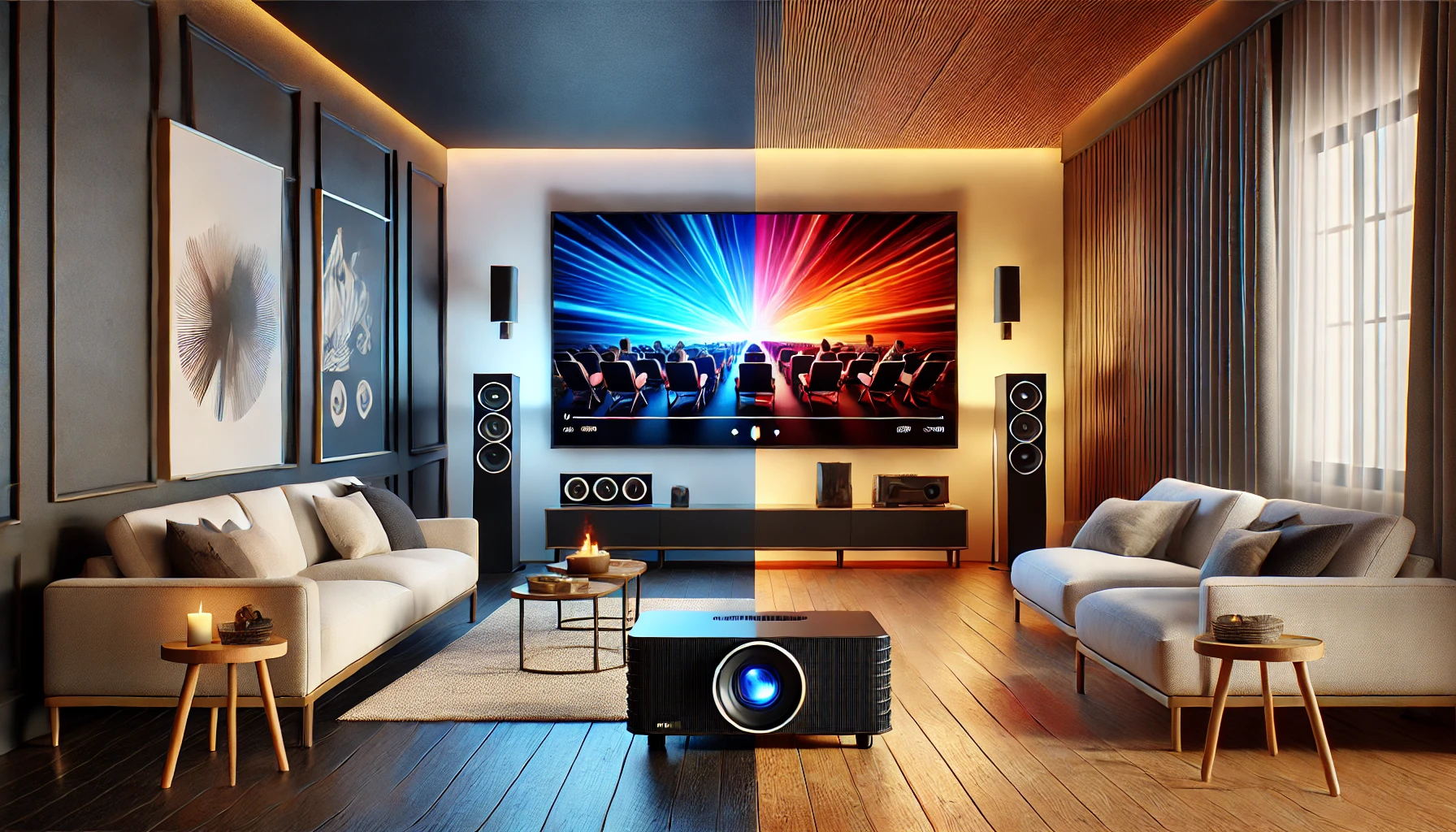OLED and Mini-LED are distinct display technologies, each with their pros and cons. OLED, utilizing self-emissive pixels, excels in contrast and color accuracy, offering true blacks and vibrant colors. In contrast, Mini-LED enhances traditional LCDs with thousands of smaller LEDs, achieving higher peak brightness and better HDR performance. While OLED provides infinite contrast ratios, Mini-LED offers improved visibility in bright environments but has limited off-axis viewing angles. Energy efficiency varies, with OLED consuming less power in darker scenes. Understanding these differences can help inform your choice for specific applications and preferences, revealing insights into their respective best uses.
Key Takeaways
- OLED displays use self-emissive pixels for true blacks and infinite contrast ratios, while Mini-LED relies on backlighting with limited contrast performance.
- Mini-LED achieves higher peak brightness levels, making it better suited for bright environments, while OLED excels in dark scenes with superior color accuracy.
- OLED maintains vibrant colors and deep blacks at wide viewing angles, whereas Mini-LED experiences color shifts when viewed off-axis.
- Response times are faster in OLED displays, reducing motion blur, while Mini-LED can exhibit noticeable blur during fast-paced content.
- OLED technology tends to be more expensive due to production costs, while Mini-LED is becoming increasingly affordable as it gains market traction.
Overview of OLED Technology
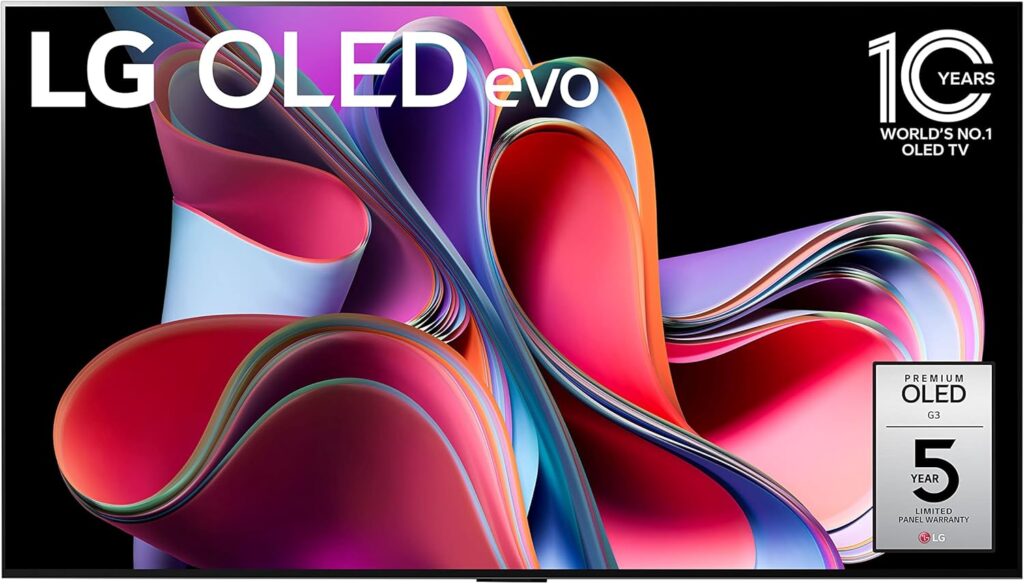
OLED, or Organic Light Emitting Diode, technology has emerged as a significant advancement in display systems, fundamentally changing how images are rendered on screens. Unlike traditional LCDs that rely on backlighting, OLED displays utilize organic compounds that emit light when an electric current passes through them. This inherent characteristic allows for greater control over individual pixels, resulting in superior contrast ratios and deeper blacks.
One of the primary advantages of OLED technology is its exceptional colorimetry, which provides vibrant and accurate colors across a wide spectrum. This is particularly beneficial for applications requiring precise color reproduction, such as graphic design and film production. Additionally, the ability to achieve true black levels enhances the overall viewing experience, making OLED displays a preferred choice in high-end televisions and mobile devices.
However, concerns regarding OLED durability persist, particularly related to screen burn-in and the longevity of organic materials. Manufacturers are continually researching enhancements to mitigate these issues, aiming to improve the lifespan and reliability of OLED displays. In conclusion, OLED technology represents a transformative leap in display innovation, offering remarkable visual performance while steering through the challenges of durability.
Overview of Mini-LED Technology
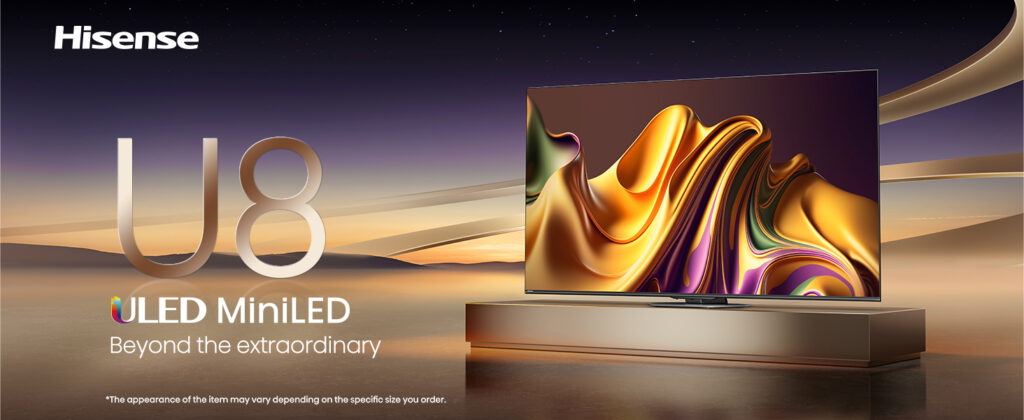
Mini-LED technology utilizes thousands of tiny, individual LEDs to enhance backlighting in displays, offering improved contrast and brightness compared to traditional LED systems. This advancement allows for greater control over local dimming, resulting in deeper blacks and more vibrant colors. The advantages of Mini-LED include enhanced HDR performance and reduced blooming effects, making it a competitive choice in the display market.
Mini-LED Backlighting Explained
The emergence of Mini-LED technology represents a significant advancement in display engineering, offering enhanced brightness and contrast compared to traditional LED backlighting. Mini-LED utilizes thousands of tiny LEDs, improving local dimming capabilities and allowing for more precise control over light zones. This results in deeper blacks and vibrant colors, making it an attractive option for high-end televisions and monitors.
One of the notable aspects of Mini-LED is its durability. The smaller size of the LEDs allows for more efficient heat dissipation, which contributes to a longer lifespan compared to larger LED systems. This enhanced mini LED durability means that consumers can expect consistent performance over time, reducing the frequency of replacements or repairs.
Mini-LED technology is increasingly being adopted across various applications, including gaming monitors, laptops, and professional displays. Its versatility makes it suitable for environments where visual fidelity is paramount. As content consumption continues to evolve, the demand for displays that can deliver superior performance is growing, positioning Mini-LED as a compelling choice for both consumers and professionals seeking cutting-edge display solutions.
Advantages of Mini-LED
One of the standout features of Mini-LED technology is its ability to deliver exceptional brightness and contrast, elevating the viewing experience to new heights. By utilizing thousands of tiny LEDs for backlighting, Mini-LED displays can achieve higher peak brightness levels compared to traditional LCDs. This not only enhances the visual quality but also allows for improved HDR (High Dynamic Range) performance, resulting in more vibrant colors and deeper blacks.
Another significant advantage of Mini-LED is its energy efficiency. The localized dimming capabilities of Mini-LED backlighting mean that only the required zones of the screen are illuminated, reducing overall power consumption. This efficiency can lead to longer lifespans for the display and lower energy bills for consumers.
In addition, Mini-LED technology is particularly well-suited for gaming performance. The rapid response times and reduced motion blur contribute to a smoother gameplay experience, making it an attractive option for gamers seeking high-quality visuals. Overall, Mini-LED technology offers a compelling blend of brightness, efficiency, and performance, positioning it as a strong contender in the display market.
Color Accuracy Comparison

Color accuracy is an essential factor for discerning viewers seeking an ideal visual experience, as it directly impacts the fidelity of images displayed on screens. When comparing OLED and Mini-LED technologies, color accuracy is greatly affected by their inherent characteristics and the methods used for calibration.
OLED displays are widely recognized for their superior color accuracy, primarily due to their ability to achieve true blacks and an extensive color gamut. Each pixel in an OLED panel emits its own light, allowing for vibrant colors and minimal distortion. This capability is complemented by effective calibration techniques that guarantee the display reproduces colors as intended, making OLED a preferred choice for professionals in fields like photography and video editing.
In contrast, Mini-LED technology, while advancing in color performance, may struggle to match the same level of accuracy. Its reliance on backlighting can lead to blooming effects, which may impact color fidelity in certain scenarios. However, with proper calibration techniques, Mini-LED displays can achieve commendable color reproduction, making them suitable for various applications, albeit with some limitations compared to OLED. Ultimately, the choice between these technologies will depend on specific viewing needs and preferences.
Brightness Levels Explained
Brightness levels are a critical factor in evaluating display technologies, particularly when comparing OLED and Mini-LED. OLED panels typically excel in contrast ratio, delivering deeper blacks and more vibrant colors, while Mini-LED displays can achieve higher peak brightness levels, enhancing visibility in well-lit environments. Understanding these differences provides insight into how each technology performs under various lighting conditions and viewer preferences.
Peak Brightness Comparison
When evaluating display technologies, peak brightness is an essential factor that greatly influences viewing experiences, particularly in high dynamic range (HDR) content. The ability of a display to achieve high peak brightness levels can enhance the depth and realism of images, making it a critical consideration for consumers and professionals alike.
OLED displays typically have lower peak brightness compared to Mini-LED displays, which utilize a larger number of local dimming zones to achieve higher brightness levels. Peak brightness measurement techniques vary between these technologies. For instance, OLED panels often rely on self-emissive pixels that can reach impressive brightness for short bursts but may struggle to maintain these levels over extended periods. Conversely, Mini-LED displays can consistently deliver higher peak brightness due to their backlighting system, which can illuminate multiple zones independently.
The implications of these differences are significant. Higher peak brightness in Mini-LED can improve visibility in bright environments and enhance the impact of HDR content, while OLED’s vibrant colors and deep blacks offer a distinct visual appeal. Ultimately, the choice between these technologies will depend on individual preferences and viewing conditions.
Contrast Ratio Differences
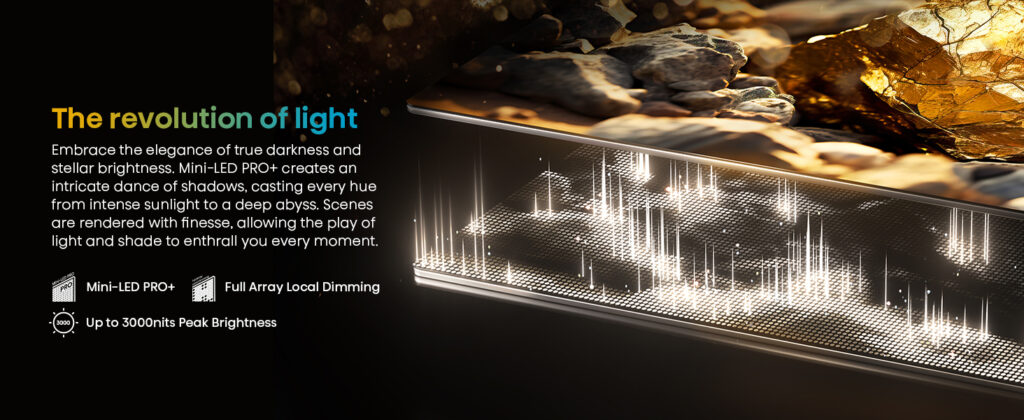
A essential aspect of display performance is the contrast ratio, which measures the difference between the darkest black and the brightest white a screen can produce. This metric is critical in evaluating the visual experience, as it directly influences how images are perceived by viewers. OLED displays excel in contrast performance due to their ability to achieve true blacks; each pixel emits its own light and can be turned off completely, resulting in an infinite contrast ratio. This capability leads to vibrant colors and depth that enhance the overall image quality.
In contrast, Mini-LED technology, while an improvement over traditional LED displays, relies on a backlight system. This approach can provide higher peak brightness levels but struggles to reach the same level of contrast performance as OLED. The localized dimming techniques in Mini-LED can reduce blooming effects and improve black levels, yet they cannot completely eliminate light bleed from adjacent zones.
Ultimately, the choice between OLED and Mini-LED depends on the viewer’s priorities. For those seeking the best contrast ratio and a more immersive visual experience, OLED stands out. However, Mini-LED offers significant advancements, making it a compelling option as well.
Contrast Ratio Differences
Contrast ratio is a critical factor that distinguishes OLED and Mini-LED technologies, influencing the overall viewing experience. The contrast ratio metrics for OLED displays are markedly higher than those for Mini-LED, often reaching infinite ratios due to the self-emissive nature of OLED pixels. Each pixel can be turned off completely, resulting in true blacks and vibrant color contrasts. This capability leads to an enhanced contrast ratio perception, allowing viewers to appreciate subtle details in dark scenes.
In contrast, Mini-LED technology utilizes a backlit panel with numerous local dimming zones, which improves contrast but cannot achieve the same level of black depth as OLED. While the contrast ratios for Mini-LED displays can be impressive, they typically range from 1,000:1 to 10,000:1, depending on the implementation. This means that while Mini-LED can provide improved brightness and color accuracy, it still struggles to match the absolute black levels presented by OLED technology.
Black Levels and Depth
Black levels and depth play an essential role in the visual performance of display technologies, notably affecting the viewer’s immersion and experience. The ability of a display to reproduce true black levels considerably influences the perceived contrast and depth perception of an image. OLED panels excel in black level performance, as they utilize self-emissive pixels that can completely turn off to achieve absolute blacks. This results in exceptional depth, enhancing the overall image quality.
In contrast, Mini-LED technology relies on a backlight and local dimming zones to improve black levels. While it has made strides in reducing light bleed, it often cannot match the absolute black levels produced by OLEDs. This disparity can impact the viewer’s experience, particularly in dark scenes where depth perception is vital.
Key considerations include:
- OLEDs provide superior black level performance.
- Mini-LED displays offer improved black levels compared to traditional LCDs.
- Enhanced depth perception is achieved through true blacks in OLEDs.
- Content with high dynamic range (HDR) benefits more from OLED technology.
Viewing Angles Analysis
Often overlooked, viewing angles considerably influence the overall user experience of display technologies. OLED displays are renowned for their exceptional viewing angles, largely due to their self-emissive nature. This characteristic allows colors to remain vibrant and blacks to appear deep, even when viewed from sharp angles. Users can comfortably enjoy content without significant color distortion or loss of detail, making OLED ideal for multi-viewing scenarios.
In contrast, Mini-LED technology, while advancing in performance, typically exhibits more limited viewing angles. Mini-LED displays use a backlighting system that can result in color shifts and decreased brightness levels when viewed off-axis. This limitation becomes particularly evident at wider viewing distances, making it less suitable for shared viewing experiences.
Additionally, screen curvature can play a role in perceived viewing angles. Curved displays are designed to enhance the immersive experience by reducing distortion and maintaining consistent color fidelity across the screen. However, the effectiveness of this feature varies between OLED and Mini-LED technologies, with OLED generally providing a more uniform experience across different angles. Ultimately, the choice between OLED and Mini-LED should consider these viewing angle disparities to align with user preferences and usage scenarios.
Local Dimming Capabilities
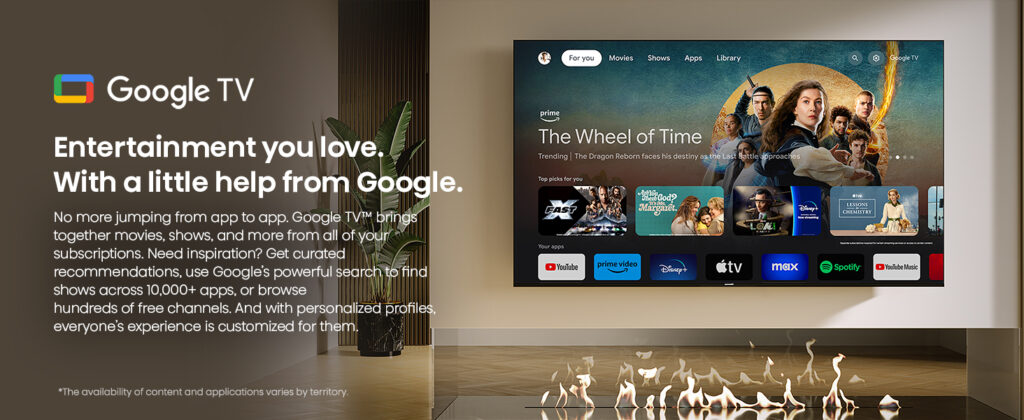
Local dimming capabilities play a critical role in determining the overall picture quality of OLED and Mini-LED displays. OLED technology utilizes individual pixel control, allowing for precise dimming that enhances contrast ratios and deepens blacks, while Mini-LED employs multiple dimming zones that can vary in effectiveness based on the number and size of these zones. Understanding the differences in brightness performance and contrast ratio impact between these two technologies is essential for consumers seeking ideal viewing experiences.
Dimming Zone Control
The effectiveness of a display’s dimming zone control greatly influences its overall picture quality, particularly in scenes with high contrast. Dimming zone implementation plays an essential role in determining how well a display can manage bright and dark areas simultaneously. OLED technology benefits from individual pixel control, allowing true blacks and vibrant colors without the need for dimming zones. In contrast, Mini-LED displays depend on a grid of dimming zones to adjust backlighting, which can lead to varying levels of dimming zone effectiveness.
Key factors in evaluating dimming zone control include:
- Number of Dimming Zones: More zones provide finer control over brightness and contrast.
- Zone Size and Shape: Smaller, more precise zones can reduce halo effects around bright objects.
- Adaptive Dimming Algorithms: Advanced algorithms enhance responsiveness to content changes, improving visual coherence.
- Implementation Quality: The craftsmanship in integrating dimming technology directly affects the display’s performance.
Contrast Ratio Impact
Contrast ratio remains a essential element in evaluating display performance, particularly regarding local dimming capabilities. This metric greatly influences contrast perception, which directly impacts the viewer’s experience. OLED technology achieves exceptional contrast ratios by employing individual pixel illumination, allowing true blacks and vibrant highlights. This results in an infinite contrast ratio, as pixels can be completely turned off, enhancing the dynamic range of the displayed content.
In contrast, Mini-LED technology utilizes a backlighting system with numerous dimming zones. While it can improve local dimming capabilities compared to traditional LED displays, it may struggle to achieve the same level of contrast as OLED. The effectiveness of Mini-LED’s local dimming largely depends on the number and precision of the dimming zones. More zones can lead to better contrast perception; however, blooming effects may occur, where light bleeds into dark areas, diminishing the overall impact.
Ultimately, the distinction in contrast ratio between OLED and Mini-LED highlights the importance of local dimming capabilities in achieving superior visual performance. As consumers seek displays with enhanced dynamic range, understanding these differences becomes essential in making informed purchasing decisions.
Brightness Performance Differences
Brightness performance is a crucial aspect when comparing OLED and Mini-LED technologies, particularly in the context of local dimming capabilities. OLED displays excel in delivering exceptional brightness uniformity, as each pixel emits its own light. This allows OLED screens to achieve deep blacks and vibrant colors, even in bright ambient lighting conditions. However, the inherent nature of OLED can lead to brightness limitations during sustained high-brightness scenes, primarily due to thermal management and potential burn-in issues.
In contrast, Mini-LED technology employs a backlighting system with numerous local dimming zones. This design enhances peak brightness efficiently, making Mini-LED displays particularly suitable for HDR content in bright environments. The local dimming capabilities of Mini-LED can notably improve contrast and detail in dark scenes, although they may still struggle with uniformity compared to OLED.
Key differences in brightness performance include:
- Brightness uniformity: OLED provides superior uniformity across the screen.
- Peak brightness: Mini-LED can achieve higher peak brightness levels.
- Local dimming efficiency: Mini-LED enhances dark scene performance.
- Ambient lighting adaptability: Both technologies handle ambient lighting differently, impacting viewing experience.
Ultimately, the choice between OLED and Mini-LED depends on individual preferences and specific viewing conditions.
Response Times and Motion Blur
High-performance displays are often evaluated based on their response times and susceptibility to motion blur, both of which greatly influence the viewing experience. In a response times comparison, OLED technology typically excels, featuring near-instantaneous pixel response rates. This characteristic allows for sharper images during fast-paced scenes, minimizing the chances of motion blur, which can detract from overall image quality.
In contrast, Mini-LED displays, while offering enhanced brightness and contrast, generally exhibit slower response times due to their reliance on LCD technology. This can lead to a more noticeable motion blur, particularly in scenes with rapid movement. Motion blur analysis reveals that Mini-LED panels, despite advancements in local dimming and backlight technology, may struggle to achieve the same level of clarity as OLEDs in dynamic content.
Furthermore, the inherent characteristics of OLEDs, such as their ability to turn individual pixels on and off, contribute to their superior performance in handling motion. As a result, for gamers and action movie enthusiasts, the choice between OLED and Mini-LED may hinge considerably on the display’s ability to provide crisp visuals and minimal motion artifacts. Therefore, understanding these response time dynamics is critical for informed purchasing decisions.
Energy Efficiency Considerations
Energy efficiency is an essential factor when evaluating display technologies, particularly in the context of long-term usage and environmental impact. The energy consumption of OLED and Mini-LED displays varies considerably due to their underlying technologies. OLED panels are known for their ability to produce deep blacks by turning off individual pixels, which can lead to lower energy consumption in darker viewing environments. Conversely, Mini-LED displays utilize a backlighting system that can consume more energy, especially when displaying bright images.
When evaluating energy efficiency, it is vital to take into account the following:
- Energy consumption: OLED generally consumes less power for darker scenes, while Mini-LED may require more power for bright scenes.
- Efficiency ratings: Look for models with high efficiency ratings to gauge overall energy performance.
- Usage patterns: The efficiency of each technology can vary depending on typical viewing habits and content types.
- Longevity: Energy efficiency can impact the lifespan and operational costs of the display.
Ultimately, understanding these energy efficiency considerations is fundamental for consumers aiming to make environmentally conscious choices while optimizing their viewing experience.
Price Range and Value
When considering display technologies, the price range and value of OLED and Mini-LED panels play a significant role in consumer decision-making. OLED displays generally command a higher price point, reflecting their advanced technology and superior picture quality, particularly in contrast and color accuracy. The affordability comparison reveals that while Mini-LED panels are typically more budget-friendly, they still offer impressive performance, making them an attractive option for consumers seeking value without breaking the bank.
In terms of long-term investment, OLED may justify its premium cost for enthusiasts and professionals who prioritize top-tier visual experiences, especially in applications like gaming and content creation. The durability and lifespan of OLED technology, however, can raise concerns about burn-in issues, which may affect its overall value proposition. Conversely, Mini-LED displays, with their enhanced brightness and lower risk of burn-in, present a compelling choice for consumers looking for longevity and performance in varied lighting conditions.
Ultimately, the decision between OLED and Mini-LED hinges on a balance of initial investment versus long-term satisfaction, with each technology catering to different user needs and preferences.
Best Use Cases for Each
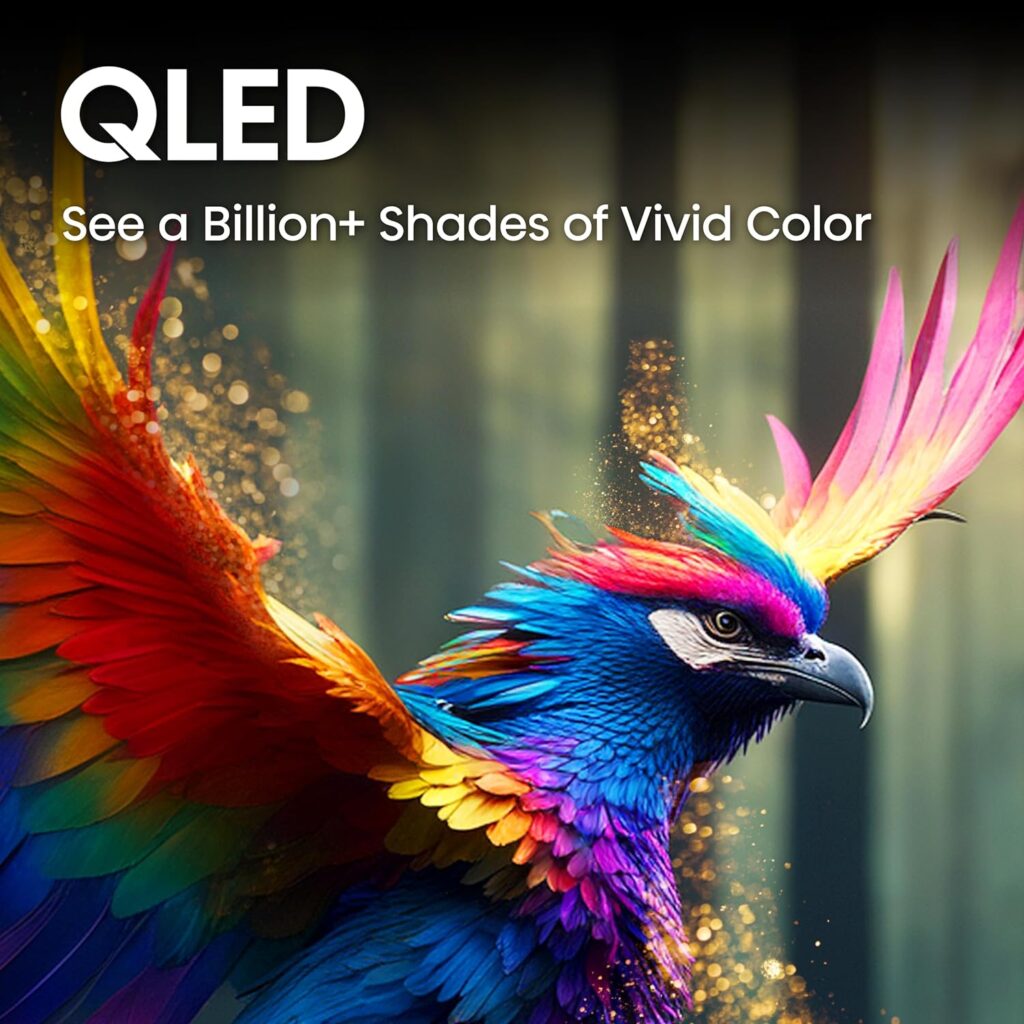
Both OLED and Mini-LED technologies excel in different scenarios, making them suitable for distinct use cases. OLED displays are renowned for their superior black levels and vibrant color accuracy, making them ideal for immersive home theater experiences and professional editing where precision is essential. Their ability to handle HDR performance effectively enhances the viewing experience for cinematic content.
On the other hand, Mini-LED technology provides impressive brightness and contrast, making it an excellent choice for general viewing and casual watching. This technology also performs well in ambient lighting conditions, ensuring that users can enjoy content without significant glare or reflections.
Key use cases include:
- Gaming experiences: OLED for its fast response times; Mini-LED for high brightness.
- Professional editing: OLED for accurate color representation.
- Home theater: OLED for deep blacks and cinematic quality.
- Content creation: Mini-LED for robust brightness and dynamic range.
Future Trends in Display Tech
The evolution of display technology is characterized by innovation and enhanced user experiences, with OLED and Mini-LED leading the charge into the future. As we look ahead, several emerging technologies are poised to redefine what a future display can achieve. One notable trend is the integration of MicroLED technology, which promises superior brightness, color accuracy, and energy efficiency. Unlike traditional OLED displays, MicroLED utilizes microscopic light-emitting diodes to create stunning visuals without the risk of burn-in.
Moreover, the rise of flexible and foldable displays signals a shift towards adaptable screen designs, enabling new form factors for devices ranging from smartphones to televisions. This flexibility not only enhances portability but also opens doors for creative applications in various industries.
In addition, advancements in artificial intelligence and machine learning are expected to play an essential role in optimizing display performance, enhancing color calibration, and refining user interfaces. As these emerging technologies converge, the future of display tech will likely offer unprecedented visual experiences, pushing the boundaries of what is possible in consumer electronics and beyond. The interplay of OLED, Mini-LED, and other emerging technologies will ultimately shape the landscape of future displays.
Frequently Asked Questions
Which Technology Is Better for Gaming, OLED or Mini-Led?
When evaluating gaming performance, both technologies excel, yet OLED generally offers superior refresh rates and response times. Mini-LED, while providing excellent brightness and contrast, may not match OLED’s performance in fast-paced gaming scenarios.
How Do OLED and Mini-Led Impact Eye Strain?
The interplay of light and darkness symbolizes the ongoing quest for eye comfort and visual clarity. OLED displays typically reduce eye strain through deeper blacks and enhanced contrast, while Mini-LED offers brightness and uniformity, impacting comfort variably.
Are There Any Burn-In Issues With Mini-Led Displays?
Mini-LED displays do not typically experience burn-in issues like some other technologies. Implementing effective burn-in prevention strategies can enhance display longevity, ensuring consistent performance and reducing the risk of image retention over time.
Can OLED and Mini-Led Be Used in Projectors?
Both OLED and Mini-LED technologies can enhance projector compatibility, offering distinct advantages. OLED provides superior contrast and color accuracy, while Mini-LED offers improved brightness and local dimming, making both viable display technologies for advanced projectors.
What Are the Environmental Impacts of OLED vs. Mini-Led?
In the intricate dance of technology and nature, OLED displays face sustainability concerns due to their energy consumption during production and disposal, while Mini-LEDs generally offer lower energy usage, presenting a more environmentally friendly alternative.
Conclusion
In the grand theater of display technology, OLED and Mini-LED engage in a dramatic rivalry, each touting its own merits as the superior choice. While OLED dazzles with its vibrant colors and infinite contrast, Mini-LED presents an impressive brightness and energy efficiency, appealing to the pragmatists. Ultimately, the discerning consumer must navigate this labyrinth of pixels and preferences, choosing between the artistic allure of OLED and the pragmatic charm of Mini-LED, as if selecting between a Picasso and an IKEA catalog.



